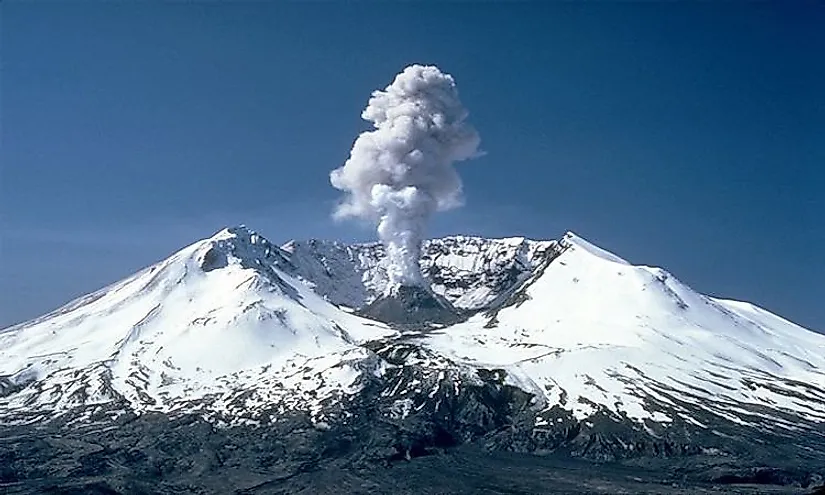The Eruption of Mount St. Helens

What Happened On That Ill-Fated Day?
On May 18th, 1980 at 8:32 am an earthquake with a magnitude of 5.1 hit the north face of the Mount St. Helens in Washington State, generating one of the largest landslides ever recorded in the history of volcanic eruptions. The northern flank of the volcano collapsed suddenly, producing a lateral blast that was heard from hundreds of miles away. The eruption blew off about 1,300 feet off the tip of the volcano and sent shockwaves, as well as pyroclastic flows all over the surrounding region. It flattened forests, melted ice and snow, and generated massive mudslides.
Massive Death And Destruction
The volcano eruption killed approximately 57 people, and several hundreds of square miles were instantly reduced to a wasteland. The destruction caused a huge loss estimated at $1.1 billion. Thousands of animals were killed in the blast. In addition, people in the quiet zone witnessed the massive ash cloud that was sent upwards, and the blast, together with the volcanic debris caused devastation for so many who were as far as 19 miles from the volcano. The Mount St. Helen volcano eruption was the deadliest and most destructive in the history of the US. Among the properties destroyed were 200 houses, 15 miles of railway, 185 miles of highway, and 47 bridges. Two more people died indirectly from accidents that happened due to poor visibility with two more suffering from fatal heart attacks caused by shoveling ash.
The Aftermath Of The Eruption
The ash from the volcano clogged most of the drainage systems, created problems with the water treatment systems, and destroyed numerous buildings and cars. During the falling of the ash, visibility was significantly reduced, resulting in the closure of many highways and roads. Air travel was also disrupted for as long as two weeks due to the amount of ash in eastern Washington airports. The fine-grain, gritty ash also caused problems for the internal combustion engines as well as other mechanical and electrical equipment. In addition, the fine ash also caused short circuits in the electrical transformers, which in turn caused blackouts. Removing the ash took a while as it was estimated to be 900,000 tons. A few weeks after the eruption, there was a high unemployment rate for the region of Mount St, Helens although only a tiny percentage of people left the areas due to their lost jobs. A few months after the eruption, some people reported experiencing emotional problems and stress, leading to the counties providing psychological counseling programs. The eruption disrupted tourism, which was vibrant in the state of Washington at that time.
Effect On The Study Of Volcanoes Today
Since the eruption of St. Helens, volcanologists have learned a lot, leading to great strides in the field. Before the eruption of Mount St. Helens in 1980, scientists had never previously witnessed landslide and lateral blasts. In1956, there was a similar landslide and blast in the eruption of Bezymianny volcano in Kamchatka in Russia. However, there were no cameras to capture and document the activity. It was only after the eruption of Mount St. Helen that the eruption of Bezymianny was fully understood. Similar landslide volcanic eruptions known as sector collapses have been identitied in more than 200 volcanoes from different countries around the world. In-depth studies of sector collapse, large mud flow, and lateral blasts on mount St. Helens has helped scientist in reassessing the volcanic hazards in different parts in the US and around the world. The studies also have helped in preparing the communities living around the volcanic zones for possible future eruptions. The studies demonstrated that volcanic eruptions could be predicted accurately, and the growth of lava dome in the newly formed crater witnessed in St. Helens has become an ideal natural laboratory that has enabled repeat experiments on eruptions. As a result of the studies on mount St Helen, 14 eruptions that occurred between 1980 and 1986 were accurately predicted within days before the eruptions.











